Lindsay Taylor: 3D textile art
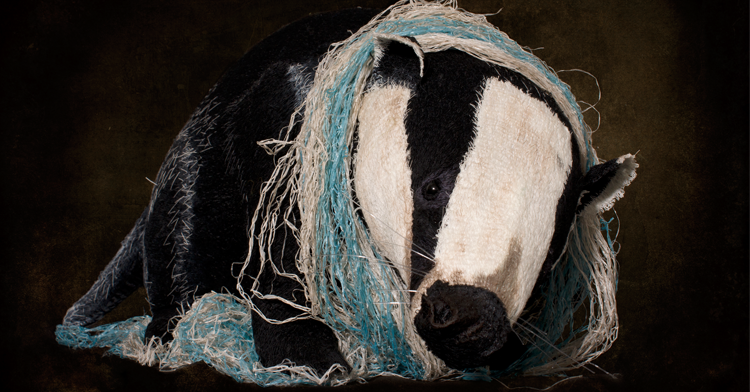
Lindsay Taylor garners inspiration from the ‘abundant beauty and untamed, intricate shapes of the natural world’. She works primarily in three dimensions and weaves natural hand-dyed fabrics into organic forms.
We first came across Lindsay’s stunning embroidered 3D textile art when we were researching our article about artists inspired by flowers. We were so taken with its originality and detail that we wanted to know more.
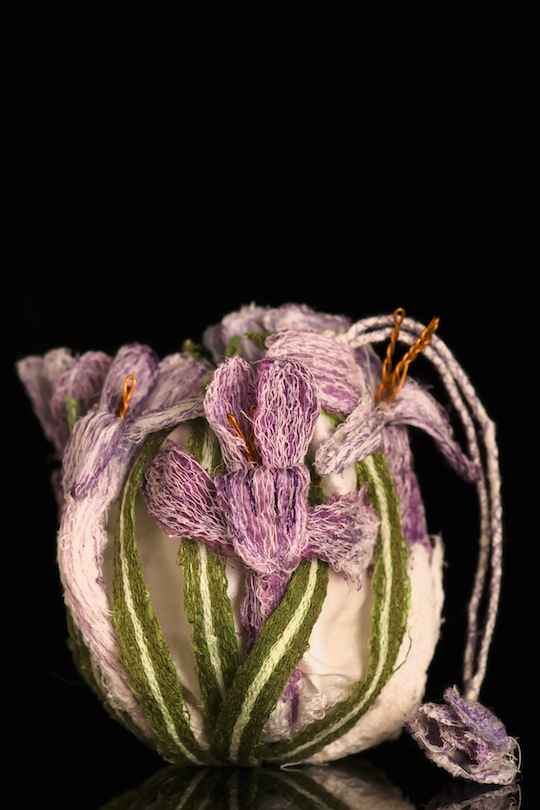
Lindsay Taylor – Crocus bag, 2010, 14cm x 7com
Starting to push the boundaries
TextileArtist.org: What initially captured your imagination about textile art?
Lindsay Taylor: Textile art is so exciting; the texture, the colour, the fact that anything goes really appealed to me. There is no right way to do things or wrong, unlike painting that has been done for thousands of years and critiqued to death. Textile art is new by comparison. Artists are just starting to push the boundaries.
What or who were your early influences and how has your life/upbringing influenced your work ?
As a teenager I loved the work of Kafe Fassett. His wonderful sense of colour beguiled me. I bought his books, and tapestry kits, and have drawled over them ever since. I was not brought up in a particularly creative household, but there was a scrap bag that I would regularly delve into to make cloths for my dolls. When my grandmother died, we inherited her treadle singer sewing machine and I do remember playing on that for hours.
What was your route to becoming an artist?
I possess City & Guilds 1&2 Embroidery, and Centra 1&2 Pattern Cutting. Both qualifications have helped me considerably, allowing me to produce the work I do. I did not set out to be known as a 3 dimensional textile artist. I was keen to use my new embroidery skills on my wedding gowns for my clients. But I could soon see these wonderful new skills were not going to be incorporated onto many bridal gowns, so a new direction was required.
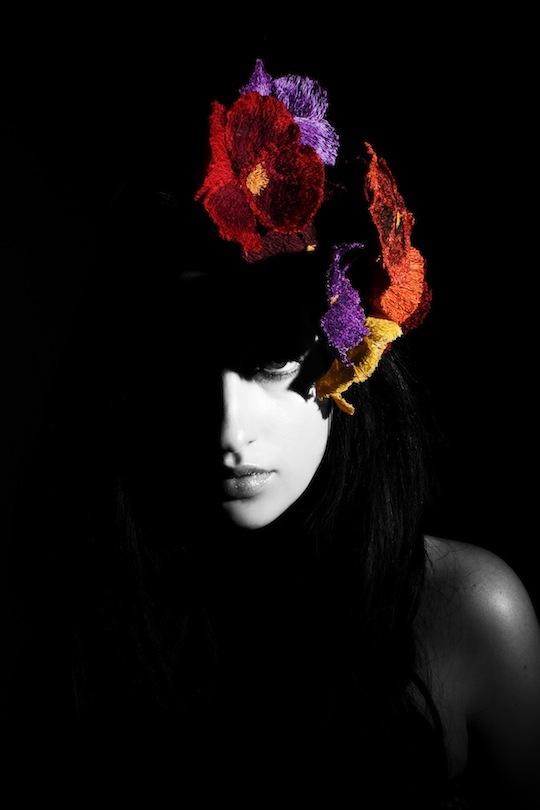
Lindsay Taylor – Pansy hat, 2010, 25cm x 24cm
Manipulated by hand into the desired shape
What is your chosen medium and what are your techniques?
Using freehand machine embroidery, I stitch onto water dissolvable fabric stretched over a traditional embroidery hoop. Making sure my stitches are interlinking, to produce a new woven fabric that is manipulated by hand into my desired shape and creating 3d textile art.
How would you describe your work and where do you think it fits within the sphere of contemporary art?
I have been extremely pro-active over the past six years. I have pushed embroidery within the craft arena to the best of my ability, having exhibited with the Crafts Council at Origin and recently at Collect held at the Saatchi Gallery. Here I used environmental issues close to home. I exhibited embroidered animals trapped in plastic. The plastic was collected from my local beaches to incorporate into the embroidery, the challenge was to execute life-like embroidered animals.
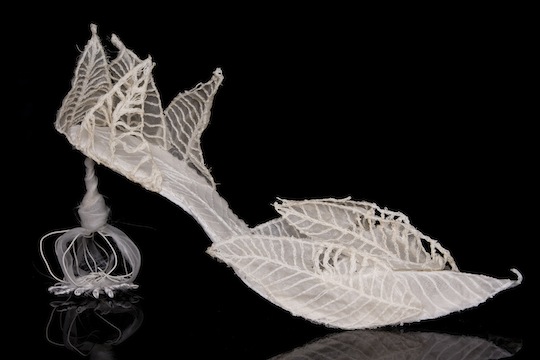
Poppy head shoe, 2010, 24cm x 13cm
Starting with a tidy studio…
Tell us a bit about your process and what environment you like to work in?
When I start a piece of work I know what I plan to make, what problems I might incur, and I will have already dyed any fabric I might need. I gather any reference materials such as books or print out material and arrange this around myself, on the floor or work space. I usually start with a tidy studio, but it soon gets cluttered and I don’t usually clear things away until the piece is finished, which could take weeks.
What currently inspires you and which other artists do you admire and why?
There are some wonderful things being done with book art such as the work by Su Blackwell and Rob Ryan. I have recently had a go myself with a project linked with an Island craft group I belong to. The QuayCrafts group decided to commemorate the work of politician and farmer William Cobbett’s 250th anniversary. We all read his book “Rural Rides” still in print today and each artist took a different slant on this subject. I decided to turn the book into an art piece by embroidering it and highlighting the plight of our declining honey bee, something W.C. would have been concerned with had he been around today.
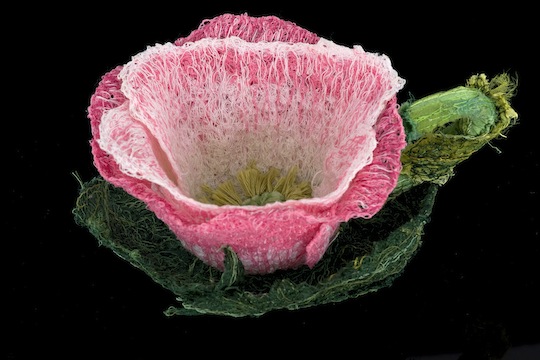
Lindsay Taylor – Poppy teacup and saucer, 2009, 8cm x10 cm
Adapting to my own requirements
Tell us about a piece of work you have fond memories of and why?
I suppose it would have to be my very first piece of 3d textile art; a poppy tea cup and saucer. The thrill of realising the piece had worked is still with me today. I can still feel that same excitement when I am pushing my skills in new directions.
How has your work developed since you began and how do you see it evolving in the future?
I have my chosen techniques that I have adapted to my own requirements. I still use them whether it be a teacup or badger. Working with embroidered animals is a new departure and such a challenge, it is so much more difficult to achieve authenticity of Fauna than flora. I hope to challenge the art world with embroidery that could sit quite comfortably next to a painting or ceramic piece.
What advice would you give to an aspiring textile artist?
Believe in your work and shout about it. If you do not shout about it, no one else will. Jump at every opportunity that comes your way, and work, work, work.
Which books would you recommend?
I am very much a visual person. Often I will buy a book and not read one single page, but study the images. If you want to produce new and unique work, one needs to look at all art arenas, from architecture to gardening. The first few books I bought when I started embroidering were Flowers for Embroidery by Richard Box, Creative Embroidery by Jan Beaney & Jean Littlejohn and The Art of Annemieke Mein: Wildlife Artist In Textiles. All these books are still treasured and looked at from time to time.
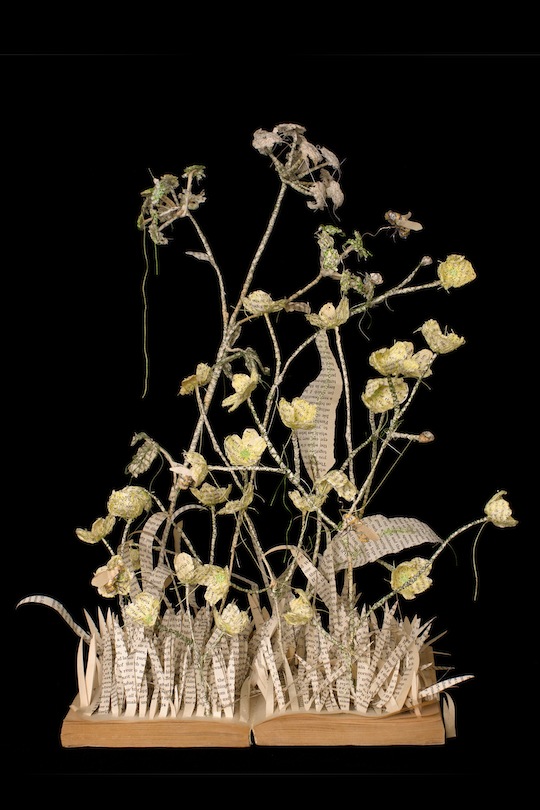
Book, 2013, 26cm x 36cm
One opportunity leads to another
What other resources do you use?
I love google images, books and magazines. But I am also interested in film, music and exhibitions. Visiting museums and galleries is a must. Even television is a resource. I find BBC 4 a great source of information.
What piece of equipment or tool could you not live without?
It would have to be my beloved Bernina sewing machine.
How do you go about choosing where to show your work?
I am often approached by galleries who have either seen my work or have read about me in the press. Often one opportunity leads to another, it’s like stepping stones.
Where can readers see your work this year?
I will be exhibiting at The Knitting and Stitching Show (London), Rye gallery (East Sussex), Gill Wing Jewellery (London) and the Farnham Museum (Farnham).
- Find out more about Lindsay Taylor at the website Lindsay-Taylor.co.uk
- Or by visiting her blog
| Embroidered Art by Lindsay Taylor | |
|---|---|
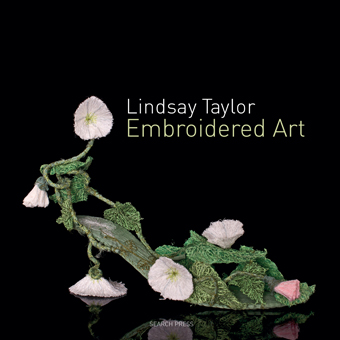 |
Lindsay Taylor is author of the beautiful book Embroidered Art.Employing a variety of techniques, including free-machine embroidery, hand embroidery, painting, dyeing, quilting, felting beading, wirework and applique, she recreates items such as bags, shoes, gowns, hats, even cups and lampshades in organic form, reflecting the intricacy and exquisite beauty of the natural world and instilling them with a dreamlike quality evocative of fairyland. |
If you’ve enjoyed our interview with Lindsay, let us know by leaving a comment below or by sharing it on Facebook using the buttons below.
















Hi lindsay this is lyn your mumsfriend in australia. Your embroidery is beautiful, diana and I looked at it when we were in balli a couple weeks ago.i think she is ordering the book for me. Keep up the good work.x